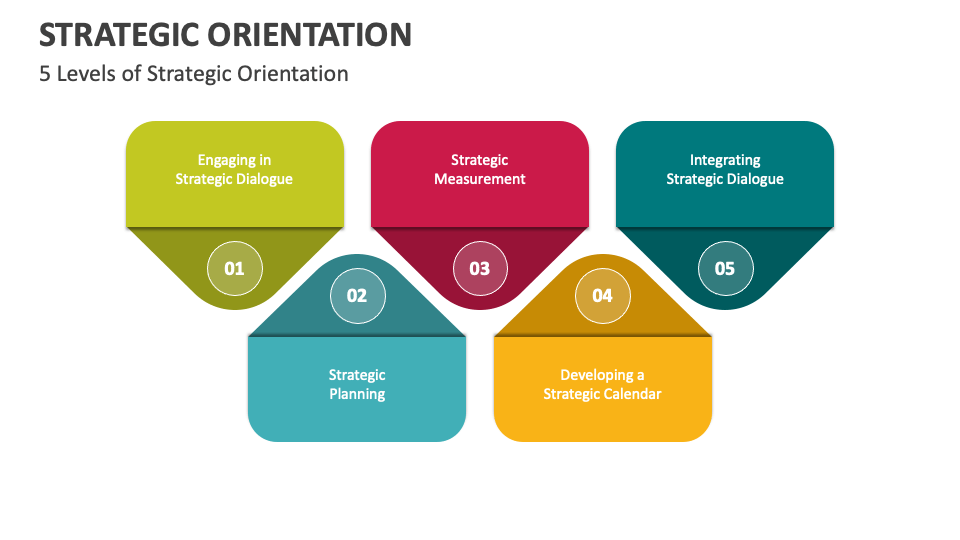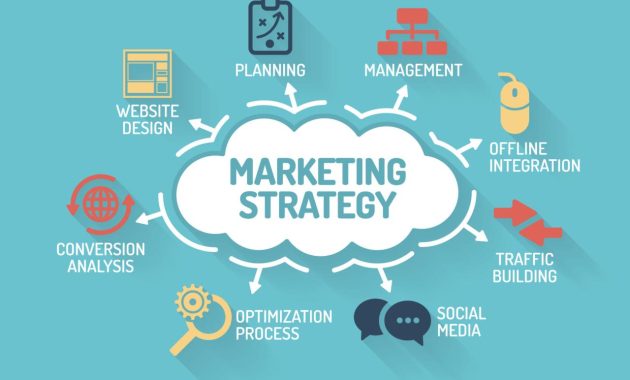Strategic Financial Planning to Align Marketing Investments with Product Performance is essential in today’s competitive landscape. Businesses must harness financial strategies that not only support marketing initiatives but also drive product success. By integrating financial planning with marketing efforts, companies can optimize their investments, ensuring that every dollar spent delivers maximum returns. In this discussion, we will delve into the critical components of financial planning, the types of marketing investments available, and how to evaluate product performance effectively.
Importance of Strategic Financial Planning
Strategic financial planning serves as the backbone of business success, providing a roadmap for resource allocation and investment strategies. By meticulously aligning financial resources with business objectives, companies can navigate the complexities of the market landscape and drive sustainable growth. This planning not only focuses on current financial health but also anticipates future opportunities and challenges, ensuring that businesses remain competitive and profitable.Effective financial planning is essential for aligning marketing investments with overall business objectives.
By establishing a clear financial framework, organizations can determine the optimal allocation of funds to various marketing initiatives that support broader company goals. This alignment ensures that every dollar spent on marketing contributes to achieving strategic objectives, maximizing return on investment (ROI), and fostering long-term success.
Key Metrics for Evaluating Financial Planning Effectiveness in Marketing
To gauge the effectiveness of financial planning in marketing, businesses utilize a range of key performance indicators (KPIs). These metrics serve as vital benchmarks to measure the success of marketing investments and their alignment with business goals. The following metrics are crucial in evaluating financial planning effectiveness:
- Return on Marketing Investment (ROMI): This metric calculates the revenue generated for every dollar spent on marketing, providing insight into the effectiveness of specific campaigns.
- Customer Acquisition Cost (CAC): By assessing the total cost incurred to acquire a new customer, this metric helps in understanding the financial efficiency of marketing efforts.
- Lifetime Value of a Customer (LTV): This measurement estimates the total revenue expected from a customer over their entire relationship with the business, guiding marketing strategy and investment decisions.
- Marketing Efficiency Ratio (MER): This ratio compares the cost of marketing to overall sales revenue, indicating how effectively marketing expenditures contribute to sales performance.
- Market Share Growth: Tracking changes in market share provides insights into the effectiveness of marketing efforts in expanding the company’s presence within the industry.
Utilizing these key metrics enables businesses to refine their strategies, ensuring that financial planning is both effective and aligned with marketing investments. By continuously monitoring and adjusting these metrics, organizations can enhance their financial strategies and drive better marketing outcomes.
“Strategic financial planning is not just about numbers; it’s about creating a sustainable path to success through intelligent resource allocation.”
Marketing Investments: Strategic Financial Planning To Align Marketing Investments With Product Performance
Marketing investments are essential for driving brand awareness, customer engagement, and ultimately enhancing product performance. Understanding the types of marketing investments available and their potential financial implications can help businesses align their strategies with their product goals. A well-planned marketing investment strategy not only amplifies the brand’s presence in the market but also ensures that resources are allocated efficiently for maximum return on investment (ROI).Categorizing marketing investments is vital for effective budgeting and forecasting.
Investments can be categorized into short-term and long-term based on their expected returns. Short-term investments typically focus on immediate results, such as promotions and advertising campaigns that drive quick sales. In contrast, long-term investments prioritize building brand loyalty and market positioning, such as content marketing and brand development initiatives.
Types of Marketing Investments and Financial Implications
To effectively manage marketing budgets, businesses must recognize the various types of marketing investments and their associated financial implications. Below are the primary categories of marketing investments:
- Digital Marketing: This includes social media advertising, search engine optimization (), pay-per-click (PPC) campaigns, and email marketing. The financial implications can range from low-cost organic strategies to high-cost paid advertisements, with the potential for high ROI when executed correctly.
- Traditional Marketing: This encompasses print media, television, and radio advertising. While often more expensive, traditional marketing can reach broader audiences and is effective for brand visibility in certain demographics.
- Content Marketing: Investing in high-quality content creation (blogs, videos, infographics) can have long-term benefits by driving organic traffic and improving search rankings. Although initial costs may be high, the enduring nature of valuable content can yield sustained engagement over time.
- Influencer Marketing: Collaborating with influencers can harness the power of their followers, driving brand awareness and credibility. Financial implications depend on the influencer’s reach and engagement level, often resulting in significant returns if the partnership aligns with brand values.
- Event Marketing: Hosting or participating in events can build strong customer relationships and generate leads. While the upfront costs can be substantial, the potential for direct engagement provides a unique opportunity to boost sales and brand loyalty.
Investing strategically in these areas requires careful consideration of both short-term gains and long-term brand building.
Successful Marketing Investment Strategies
Numerous brands have successfully implemented marketing investment strategies that improved their product performance. These examples illustrate the potential impacts:
- Coca-Cola: The “Share a Coke” campaign personalized bottles with names, driving consumer engagement and boosting sales by 4% in a declining market. This short-term investment created a buzz that resulted in long-lasting brand loyalty.
- Dollar Shave Club: Leveraging a humorous viral video for their launch, they captured significant market share quickly. The low-budget video led to over 12,000 subscriptions in the first 24 hours, showcasing the power of creative digital marketing.
- Airbnb: By investing in content marketing and leveraging user-generated content, Airbnb enhanced its appeal and trustworthiness. This long-term strategy has positioned them as a leader in the travel industry, driving continuous growth.
- Red Bull: Utilizing event marketing and content creation through extreme sports sponsorships, Red Bull has built a lifestyle brand that resonates with its target audience. Their investment aligns closely with brand values, resulting in consistent market performance.
By understanding the types of marketing investments, their financial implications, and learning from successful strategies, businesses can better align their marketing efforts with product performance, ensuring sustainable growth and profitability.
Product Performance Metrics
In today’s competitive landscape, understanding product performance metrics is crucial for aligning marketing investments with tangible outcomes. These metrics serve as indicators of how well products are performing in the market, allowing businesses to make informed decisions regarding their marketing strategies. By assessing these metrics, companies can optimize their investments to enhance product visibility and drive growth.Effective assessment of product performance requires a comprehensive understanding of critical metrics.
These metrics enable organizations to evaluate the impact of marketing efforts on the overall success of a product. Key performance indicators (KPIs) provide insights into sales trends, customer engagement, and market responsiveness, ultimately facilitating strategic planning.
Critical Metrics for Product Performance
Understanding specific metrics is essential for assessing how marketing influences product performance. The following table highlights different product performance indicators, their definitions, and their relevance to marketing strategies.
| Metric | Description | Relevance to Marketing Strategies |
|---|---|---|
| Sales Revenue | Total income generated from product sales over a specific period. | Indicates the effectiveness of marketing campaigns in driving purchases. |
| Market Share | Percentage of total market sales that a product captures. | Reflects competitive positioning and the success of promotional efforts. |
| Customer Acquisition Cost (CAC) | Cost incurred to acquire a new customer. | Helps determine the efficiency of marketing spend in attracting new customers. |
| Customer Lifetime Value (CLV) | Projected revenue a customer will generate during their relationship with a brand. | Informs marketing investment decisions based on long-term customer profitability. |
| Return on Marketing Investment (ROMI) | Revenue generated for every dollar spent on marketing. | Measures the effectiveness and efficiency of marketing campaigns. |
Understanding these metrics not only supports immediate decision-making but also allows marketers to forecast trends and adjust strategies accordingly. By continuously monitoring these indicators, businesses can refine their approach, maximizing the return on investment in marketing.
Impact of Product Lifecycle Stages on Marketing Investment Strategies
The product lifecycle plays a significant role in shaping marketing investment strategies. Each stage—introduction, growth, maturity, and decline—demands a tailored marketing approach to optimize performance and drive profitability.In the introduction stage, marketing investments typically focus on building awareness and educating potential customers about the new product. Strategies may include promotional discounts or targeted advertising campaigns to stimulate initial interest.During the growth stage, marketing efforts shift towards expanding market reach and enhancing brand loyalty.
This often involves increasing promotional spend to capture market share and reinforce product benefits. In the maturity stage, the focus tends to shift to retaining existing customers and differentiating the product from competitors. Marketing strategies may include loyalty programs or promotional offers aimed at encouraging repeat purchases.As the product enters the decline stage, marketing investments often decrease. However, strategic decisions may involve pivoting marketing messages or repositioning the product to target niche markets, thereby prolonging its lifecycle.Understanding the interplay between product lifecycle stages and marketing investments is crucial for optimizing product performance.
By tailoring strategies to each stage, businesses can ensure that their marketing efforts yield maximum results and align with overall financial goals.
Aligning Financial Planning with Marketing Strategies

Integrating financial planning with marketing strategies is essential for optimizing resource allocation and maximizing returns on investment. This synergy enables companies to better navigate market fluctuations while achieving their marketing objectives.To effectively align financial resources with marketing goals, organizations can adopt a structured approach. This process begins with establishing clear marketing objectives that resonate with overall business goals, followed by detailed financial analyses to ensure the availability of resources that support these initiatives.
The following actionable steps Artikel this alignment process:
Steps for Aligning Financial Resources with Marketing Goals
The steps involved in integrating financial planning into marketing strategy development are crucial for creating a cohesive framework that fosters growth and profitability.
1. Define Marketing Objectives
Clearly articulate short-term and long-term marketing goals that align with your business strategy. This could include increasing brand awareness, launching new products, or targeting new customer segments.
2. Conduct Financial Analysis
Assess current financial resources and budget constraints. This involves examining historical marketing expenditures and their outcomes to inform future investments.
3. Prioritize Marketing Initiatives
Based on the defined objectives and available budget, prioritize marketing initiatives that promise the highest return on investment. Use predictive analytics to assess potential outcomes of various initiatives.
4. Allocate Budgets Accordingly
Distribute financial resources among prioritized initiatives, ensuring that critical projects receive the funding they need while accommodating flexibility for unexpected market changes.
5. Monitor Performance Metrics
Establish key performance indicators (KPIs) to measure the effectiveness of marketing investments. These metrics should provide insights into how financial resources are impacting marketing performance.
6. Adjust Strategies Based on Insights
Be prepared to reallocate budgets and adjust strategies based on real-time performance data and market trends. This adaptive approach ensures that marketing efforts remain relevant and effective.The impact of market trends on financial planning for marketing investments plays a significant role in shaping marketing strategies.
Impact of Market Trends on Financial Planning
Understanding market trends is essential for making informed financial decisions regarding marketing investments. Companies must stay attuned to shifts in consumer behavior, economic conditions, and competitive landscapes to remain agile.Market trends can influence financial planning through the following factors:
Consumer Preferences
Changes in consumer preferences can necessitate shifts in marketing strategies. For example, the rise of digital channels may require increased investment in online advertising and social media campaigns.
Economic Conditions
Economic downturns may lead to tighter budgets, prompting companies to reassess their marketing investments. Conversely, during economic booms, there may be opportunities for increased spending to capitalize on growing demand.
Technological Advancements
Innovations in technology can create new marketing channels and tools, requiring financial investments in new platforms or software that enhance marketing effectiveness.
“Adapting financial strategies to market realities ensures that marketing investments yield the highest possible returns.”
In summary, aligning financial planning with marketing strategies is not merely a best practice; it is a necessity for organizations aiming to thrive in competitive environments. By following a systematic approach and staying responsive to market trends, businesses can effectively manage their marketing investments to achieve targeted outcomes.
Case Studies
Businesses across various sectors have found success in aligning their financial planning with marketing investments, showcasing the power of strategic financial decisions in enhancing product performance. These case studies illustrate the diverse approaches that different organizations have taken, revealing the effective marketing strategies utilized to achieve remarkable results.One prominent example is PepsiCo, which utilized a comprehensive financial planning model to optimize their marketing budget effectively.
By focusing their investments on high-impact digital marketing campaigns, PepsiCo experienced a 15% increase in market share over two years. Their analysis highlighted the effectiveness of targeted social media advertisements that directly engaged consumers, demonstrating how aligning financial resources with innovative marketing strategies can lead to substantial gains.
Sector-Specific Examples of Strategic Financial Alignment
The following are notable instances across various sectors where businesses successfully aligned their financial planning with marketing investments:
Technology Sector – Apple Inc.
Apple’s financial strategy emphasizes investing heavily in marketing during product launches, which has proven effective. For instance, the launch of the iPhone 12 saw an investment of over $200 million in marketing, resulting in record-breaking sales of 100 million units within seven months. This case exemplifies how significant marketing investments, when aligned with product performance metrics, can yield extraordinary results.
Retail Sector – Walmart
Walmart implemented a data-driven financial planning approach that informed their marketing strategies. By analyzing customer purchasing patterns, Walmart enhanced their marketing effectiveness through targeted advertising and promotions. This alignment resulted in a 10% increase in sales during promotional periods, showcasing how financial insights can refine marketing efforts to boost product sales.
Automotive Sector – Ford Motor Company
Ford’s marketing strategy for the launch of the Mustang Mach-E involved a calculated financial investment of approximately $50 million in digital ads. The campaign’s successful execution led to a 20% increase in electric vehicle sales in the U.S. The alignment of financial planning with a creative marketing strategy highlights the impact of targeted financial expenditures on product performance.
Pharmaceutical Sector – Johnson & Johnson
In the pharmaceutical sector, Johnson & Johnson adopted a unique approach by linking their financial investments in marketing to health outcomes. For the launch of a new diabetes medication, they allocated a substantial budget for educational campaigns that informed healthcare providers and patients. This strategy not only drove product performance but also enhanced brand reputation, leading to a 25% increase in prescriptions within the first year.
Consumer Goods Sector – Unilever
Unilever’s commitment to sustainability led them to align their financial planning with marketing investments in eco-friendly products. Their campaign for sustainable brands such as Seventh Generation involved a significant financial commitment, resulting in a 30% sales increase for those products. This illustrates how a well-planned financial strategy can support marketing efforts and contribute to both product performance and corporate responsibility.These case studies demonstrate that successful alignment of financial planning with marketing investments can yield significant advantages across different sectors, driving product performance and enhancing overall business results.
By leveraging strategic insights and targeted marketing, businesses can maximize their investments and achieve sustainable growth.
Tools and Resources for Strategic Financial Planning
In the modern business landscape, effective financial planning is crucial for aligning marketing investments with product performance. The right tools and resources can significantly enhance decision-making processes, ensuring that every dollar spent contributes to the organization’s bottom line. This segment explores essential software, best practices in data analytics, and the importance of collaboration between finance and marketing teams.
Software and Tools for Effective Financial Planning
Leveraging advanced software and tools is essential for strategic financial planning in marketing. Various platforms can streamline budgeting, forecasting, and performance analytics, providing insights that drive decision-making.
- Tableau: A robust data visualization tool that allows marketers to analyze financial data and derive actionable insights through intuitive dashboards.
- Microsoft Excel: A timeless classic, Excel remains a vital tool for creating budgets, forecasts, and financial models due to its flexibility and powerful analytical functions.
- Adaptive Insights: This cloud-based software enhances financial planning and analysis by enabling collaboration among teams, facilitating real-time updates and reporting capabilities.
- QuickBooks: An accounting software that simplifies financial management, making it easier to track marketing expenditures against product performance metrics.
Using Data Analytics in Financial Decision-Making
Data analytics plays a pivotal role in optimizing financial decisions for marketing activities. By utilizing data effectively, organizations can uncover trends, measure performance, and refine strategies to maximize ROI.The integration of analytics into financial decision-making ensures that marketing investments are directed toward the most effective channels. Here are key best practices for this:
- Utilize Predictive Analytics: Employ predictive modeling to forecast revenue based on historical data, enabling proactive budget adjustments.
- Implement Performance Metrics: Establish KPIs that align marketing initiatives with financial goals, allowing for real-time adjustments based on performance.
- Conduct Scenario Analysis: Analyze various financial scenarios to understand potential impacts on cash flow and profitability, enabling informed investment decisions.
- Invest in Customer Analytics: Use customer behavior data to tailor marketing investments, ensuring they resonate with target audiences and drive conversions.
The Importance of Collaboration Between Finance and Marketing Teams
Collaboration between finance and marketing teams is essential for successful strategic planning. This partnership fosters a culture of transparency and shared objectives, ultimately leading to more informed financial decisions.Key elements of this collaboration include:
- Regular Communication: Establish routine meetings to discuss budget allocations, marketing performance, and alignment with financial targets.
- Joint Strategy Sessions: Engage both teams in strategy development sessions to ensure marketing initiatives are financially viable and aligned with overall business goals.
- Shared Technology Platforms: Utilize integrated software solutions that allow both teams to access real-time data, facilitating informed decision-making and accountability.
- Cross-Functional Training: Provide training sessions for marketing professionals on financial principles, and vice versa, to enhance mutual understanding and collaboration.
Collaboration between finance and marketing transforms strategic financial planning into a cohesive effort that drives growth and improves product performance.
Challenges in Strategic Financial Planning
In the dynamic landscape of today’s markets, aligning financial planning with marketing investments presents several challenges for businesses. As companies strive to optimize their marketing strategies while managing their financial resources effectively, they often encounter obstacles that can hinder their overall performance and growth.One of the most significant challenges is the difficulty in accurately forecasting the return on investment (ROI) for marketing initiatives.
Understanding how marketing expenditures translate into sales and revenue can be complex due to various factors such as market fluctuations, consumer behavior changes, and competitive pressures. Additionally, companies may struggle with a lack of integration between financial and marketing teams, leading to misalignment in goals and priorities.
Common Challenges in Aligning Financial Planning with Marketing Investments
The integration of financial planning and marketing investments is fraught with challenges that require careful consideration. Businesses often face the following common issues:
- Unclear Metrics for Success: Many companies lack standardized metrics to measure the effectiveness of marketing investments, leading to ambiguity in evaluating performance.
- Dynamic Market Conditions: Rapid changes in market trends can render financial forecasts obsolete, making it challenging to maintain alignment.
- Resource Allocation Conflicts: Different departments may prioritize distinct goals, resulting in conflicts over resource allocation and financial planning.
- Lack of Historical Data: New or innovative marketing strategies may not have historical data to support financial projections, complicating budget decisions.
Strategies to Overcome Financial Planning Obstacles in Marketing Initiatives
Addressing the challenges in aligning financial planning with marketing investments requires strategic approaches that enhance collaboration and adaptability. Implementing the following strategies can help overcome these obstacles:
- Establish Clear KPIs: Define key performance indicators (KPIs) that are tied directly to financial outcomes. This allows for better tracking and assessment of marketing effectiveness.
- Enhance Cross-Department Communication: Foster communication between marketing and finance teams to ensure mutual understanding of goals, challenges, and strategies.
- Utilize Predictive Analytics: Leverage data analytics tools to forecast market trends and consumer behavior, thereby improving the accuracy of financial planning.
- Embrace Flexibility in Financial Plans: Develop adaptable financial plans that can be revised in response to changing market conditions, allowing for rapid reallocation of resources as needed.
Adapting Financial Plans Based on Changing Market Conditions, Strategic Financial Planning to Align Marketing Investments with Product Performance
In an ever-evolving market, the ability to adapt financial plans is crucial for sustaining competitive advantage. Companies must implement a system for regular review and adjustment of financial strategies based on real-time data and market insights. This can be achieved through:
- Continuous Market Analysis: Regularly analyze market data, including competitor performance and consumer trends, to identify potential shifts that may impact financial planning.
- Scenario Planning: Prepare multiple financial scenarios based on various market conditions, enabling quick decision-making when unexpected changes occur.
- Feedback Loops: Establish feedback mechanisms that allow for quick adjustments based on marketing performance evaluations and financial outcomes.
“The ability to swiftly adapt financial strategies in response to market changes is not just beneficial, but essential for long-term success.”
Future Trends in Financial Planning and Marketing Integration
As the landscape of business continues to evolve, strategic financial planning in marketing is set to undergo significant transformations. These changes are driven by technological advancements, shifting consumer behaviors, and a growing emphasis on data-driven decision-making. Understanding these future trends is crucial for businesses aiming to align their marketing investments with product performance effectively.Technological advancements are transforming how businesses approach financial planning and marketing strategies.
Innovations such as artificial intelligence (AI), big data analytics, and marketing automation are becoming integral components of strategic financial planning. Companies are increasingly leveraging these technologies to gain deeper insights into consumer preferences, optimize marketing spend, and forecast product performance more accurately.
Emerging Trends Shaping Financial Planning
The following trends are anticipated to significantly influence the integration of financial planning and marketing strategies:
- AI-Powered Analytics: The adoption of AI tools for predictive analytics is on the rise, allowing marketers to forecast trends and adjust budgets proactively based on real-time data.
- Integration of Financial and Marketing Data: Companies will increasingly combine financial metrics with marketing performance indicators to create a holistic view of ROI.
- Increased Focus on Sustainability: Financial planning will take into account the long-term impact of marketing investments on sustainability, aligning corporate social responsibility goals with financial outcomes.
- Personalized Marketing Strategies: As consumer data becomes more accessible, financial planning will allocate resources to support tailored marketing efforts aimed at specific demographics.
- Adaptive Budgeting Techniques: Organizations will move towards flexible budgeting models that allow for quick adjustments based on market fluctuations and performance metrics.
Technological Influences on Financial Planning
The influence of technology on financial planning is multi-faceted, affecting both the methods and tools used in strategic marketing. Key technological advancements include:
- Data Visualization Tools: Enhanced data visualization software will offer powerful insights that drive decision-making in financial planning, making it easier for marketers to interpret complex data sets.
- Cloud-Based Financial Management: Adoption of cloud solutions enables real-time access to financial data, facilitating more agile marketing strategies and budgeting processes.
- Artificial Intelligence in Marketing: AI can optimize ad spending and targeting by analyzing consumer behavior patterns, ensuring that marketing investments yield high returns.
- Blockchain for Transparency: Blockchain technology offers unprecedented transparency in transactions, providing marketers with reliable data to support financial planning.
Potential Future Shifts in Marketing Investment Priorities
The following table Artikels potential future shifts in marketing investment priorities based on emerging market trends. These trends reflect a growing emphasis on technology, personalization, and sustainable practices.
| Marketing Focus Area | Current Investment Priority | Projected Future Investment Priority |
|---|---|---|
| Digital Marketing | 35% | 50% |
| Content Marketing | 20% | 25% |
| Data Analytics | 15% | 30% |
| Sustainability Initiatives | 10% | 20% |
| Personalization Efforts | 10% | 20% |
“Strategic alignment of financial planning and marketing investments is essential for navigating the complexities of the future marketplace.”












